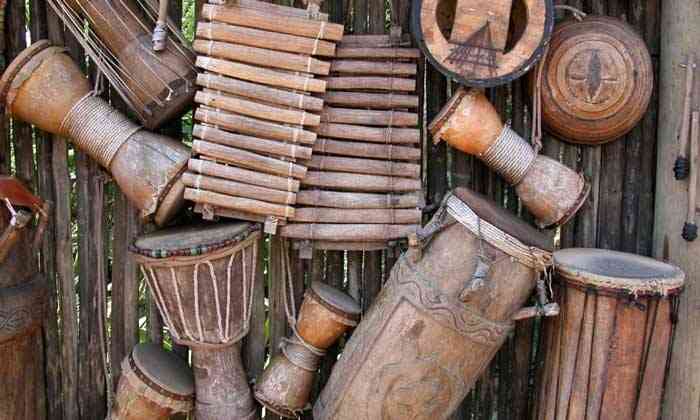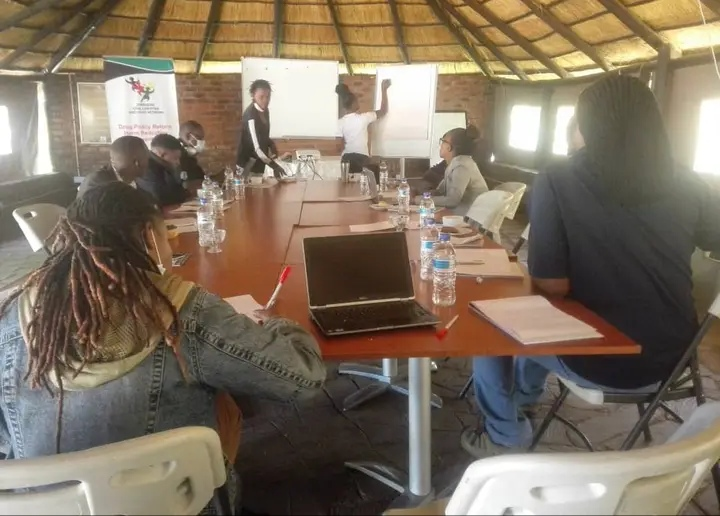
C
elebrating and knowing about our African history is something that remains of importance particularly among the new generation.
It is of note that we are living in an age where cultural erosion has become a manifestation which has affected the Zimbabwean community as a result of the impacts of globalisation and the influx of technology.
The understanding of our past and history as Africans, and what the history text books in Zimbabwe teach us tells us of how black history is traced from colonization, slavery, civil rights movements and the clamour for independence, which are situations that have remained of core influence.
As artists and creatives, our role is great as we partake in the documenting and telling of the stories of the past and those which are occurring in the now.
We retell the events, experiences and the emotions that we have witnessed in the past and the happenings we are currently seeing.
The understanding of the past is something which is core as in a great many cases there are several lessons that creatives can learn and adhere to.
It is important that as creatives we are able to understand and also examine Zimbabwean art through time, by area or even tribal division which is indicative of recent historic and political changes.
- ZRC wraps up stakeholder consultations
- Letter from America: Ariel Primary: A school that teaches pupils to be angels
- Grace tidings: Faith of God: The access code to victorious living
- Grace tidings: Right and wrong thinking
Keep Reading
We can trace the artistic traditions of Zimbabwe from the pre-historic times of the early and late stone age through the rock paintings by the San and Khoi Khoi showing a critical skill of drawing, and pottery among a few.
These forms of art have also been useful in the explanation of the pre-colonial past of Zimbabwe particularly the gender division of labour, economic activities, religious rituals and rites.
An example is the significance of the soapstone birds which were excavated in Great Zimbabwe. These have become a part of the national flag and many of the country’s emblems are a proof of how art remains a central entity in the Zimbabwean social fabric.
It is of note that with the coming of colonisation, art within the context of Zimbabwe lost most of its spiritual power with the conversion of a majority of the population to Christianity.
It can be stated that the missionaries harmed the local cultures by demanding the destruction of anything that they regarded as anti-Christian such as masks or carvings which were thought to have votive powers appealing to some god and not the Christian one.
A critical facet is also basing on the understanding of how a true creative has to embrace aesthetics of cultural pluralism which enhances the authenticity and the credibility of one’s art work.
It is of note that Zimbabwean tribes and communities are traditionally collectivistic, and this means that people tend to put their group of family interests before their own, receiving support, protection and a sense of belonging in return.
As I also tour the different parts and areas of Zimbabwe, there is a great emphasis on communal gatherings within the different tribes where people can share stories, music, songs and dance.
One unique aspect of Zimbabwean culture we tend to overlook is in how it has a rich long tradition of storytelling and folklore that provides each generation with a sense of connection to their history and ancestors.
These stories also provide communities with a unified understanding of their group’s origins. Storytelling gatherings may be accompanied with theatrical and musical performances.
For example, I like the late Chiwoneso Maraire’s album titled Ancient voices where she infuses elements of Shona folklore and traditional songs, which tell a deeper story of African mysticism.
Every song, poem and artwork has a deeper meaning which is attached to it, and is meant to entertain, reprimand, acclaim and praise; telling a story which the audience has to decipher and digest the deeper aesthetics of the meaning.
Music and dance are also central to Zimbabwean culture. The traditional sounds, rhythms and instruments are distinctive and showcase the colour, creativity, spirit and joy of the Zimbabwean people.
The mbira has a light, warm, acoustic sound and is used in most celebrations.
The mbira may be used to contact spirits, govern the weather and chase away sickness among other purposes, and can be considered sacred in some communities.
On my part I feel that the mbira has a therapeutic effect when I play it as it resonates a calmness and relaxation in my body and mind edifying the soul. The sound of the mbira helps me also connect with the silence of nature which is a requisite for good emotional and psychological health.
When it also comes to marimba playing, I enjoy it because I experiment with patterns and sequences which help in creating a great musical sound. I am also avidly into different percussive instruments which palpitate the emotion of dance and these are rhythms that have been existent from time immemorial and still have an impact.
There are many other rituals and ceremonial practices in Zimbabwe and most are specific to certain tribes while others are more widely practised.
Many relate to celebrating milestones in people’s lives such as marriage, the installation of chiefs or the circumcision ceremony that marks a boy’s transition to manhood. Traditional ceremonies, festivals and rituals also usually involve contacting the spirit world.
I have seen many dance groups such as Hloseni arts and Othnell Mangoma play an active role in the strengthening of the indigenous Zimbabwean sounds and songs, which is something of value and has the propensity to export the local culture to a wider audience.
Politeness is one deep aspect which has been an embodiment of our social fabric in the context of Zimbabwe. In Shona there is the mention of “tsika” or “amasiko” in Ndebele, which is compliance with socially acceptable behaviour.
Artists have one of the hardest and most challenging parts of their creative journeys, which is the need to be exemplary in each and everything that they do. They are the ones who have to pass on the baton of exemplary behavior to the younger generation.
For artists, a critical need is for them to be warm, welcoming and also engaging, understanding issues of formality and being non-confrontational. There is a need to appease and avoid any disagreement or friction that can offend someone’s honor as it is important to place value in considerate behavior.
As creatives, we should also understand that every distinct social and ethnic group in Zimbabwe has a particular model for what they consider to be correct and polite decorum.
Our mandate is to teach the society on being virtuous, polite and aligning to our cultural standards which are enmeshed in the precepts of ubuntu.
This involves being respectful to elders, obedient to parents and figures of authority, having self-control and patience as well as observing the cultural customs and the social structures in place.
Respect and tolerance is something one learns and develops in adolescence to eventually foster self-control. Someone who has been taught and raised well to have good manners is said to have ‘hunhu’ or ‘ubuntu’.
Hunhu and ubuntu cannot be accurately translated into English, but they mean something similar to ‘the essence of humanity/humaneness’.
As creatives, our content has to resonate with ubuntu and it has to also be enmeshed in the message of love and positivity.
These are the values that underpin the normative of etiquette and they vary between cultures.
It is our duty as creatives to not have monolithic approaches in embracing culture and take a more diverse stance which will enhance the originality and the exportability of our local arts scene.
nRaymond Millagre Langa is a musician, poet, orator, independent researcher and founder of Indebo edutainment Trust. You can follow on Facebook @Millagre Ray Langa, on X you can follow on #Millagre Langa, email. millagrepapito@gmail.com or indebotrust@gmail.com










